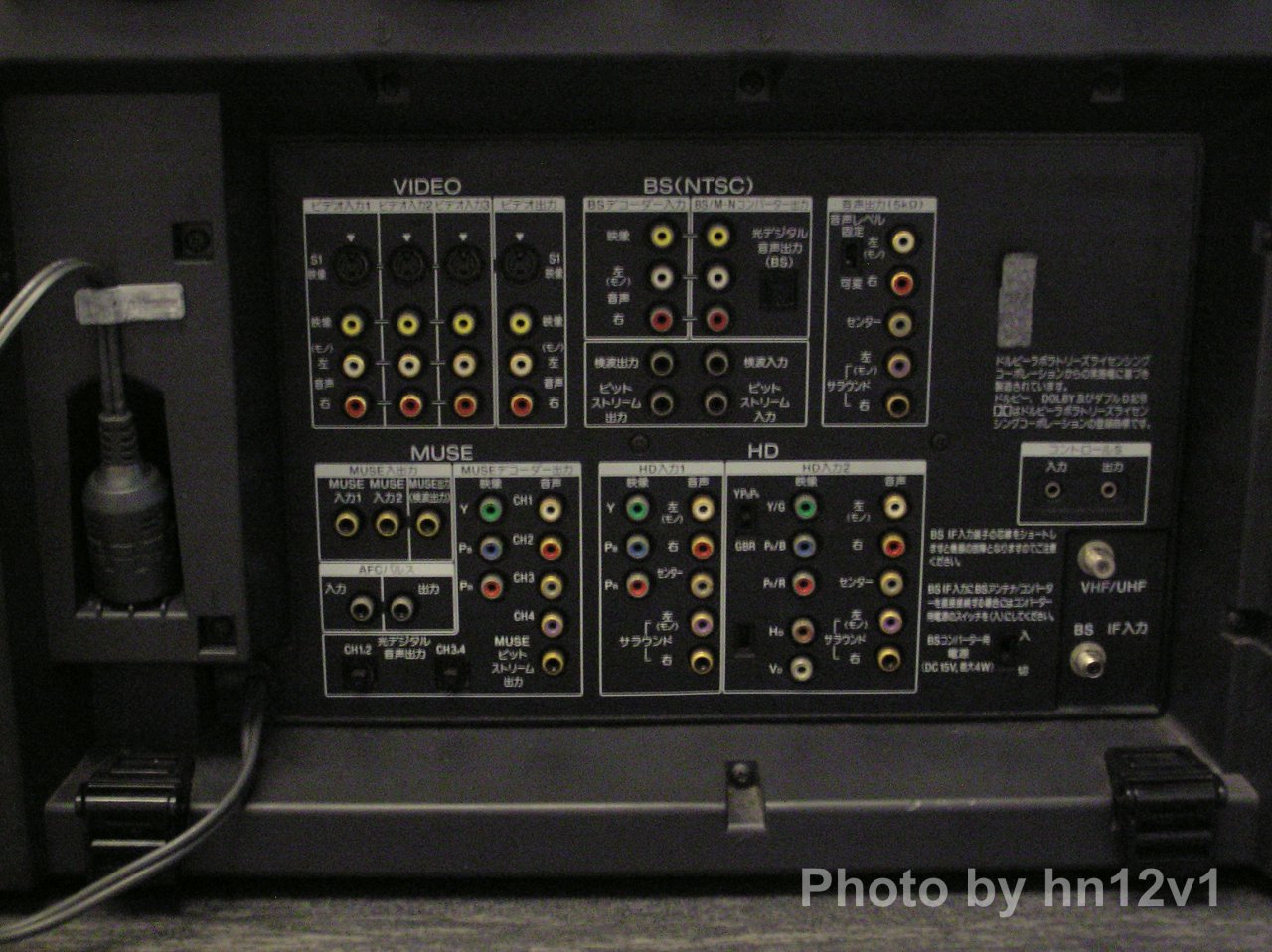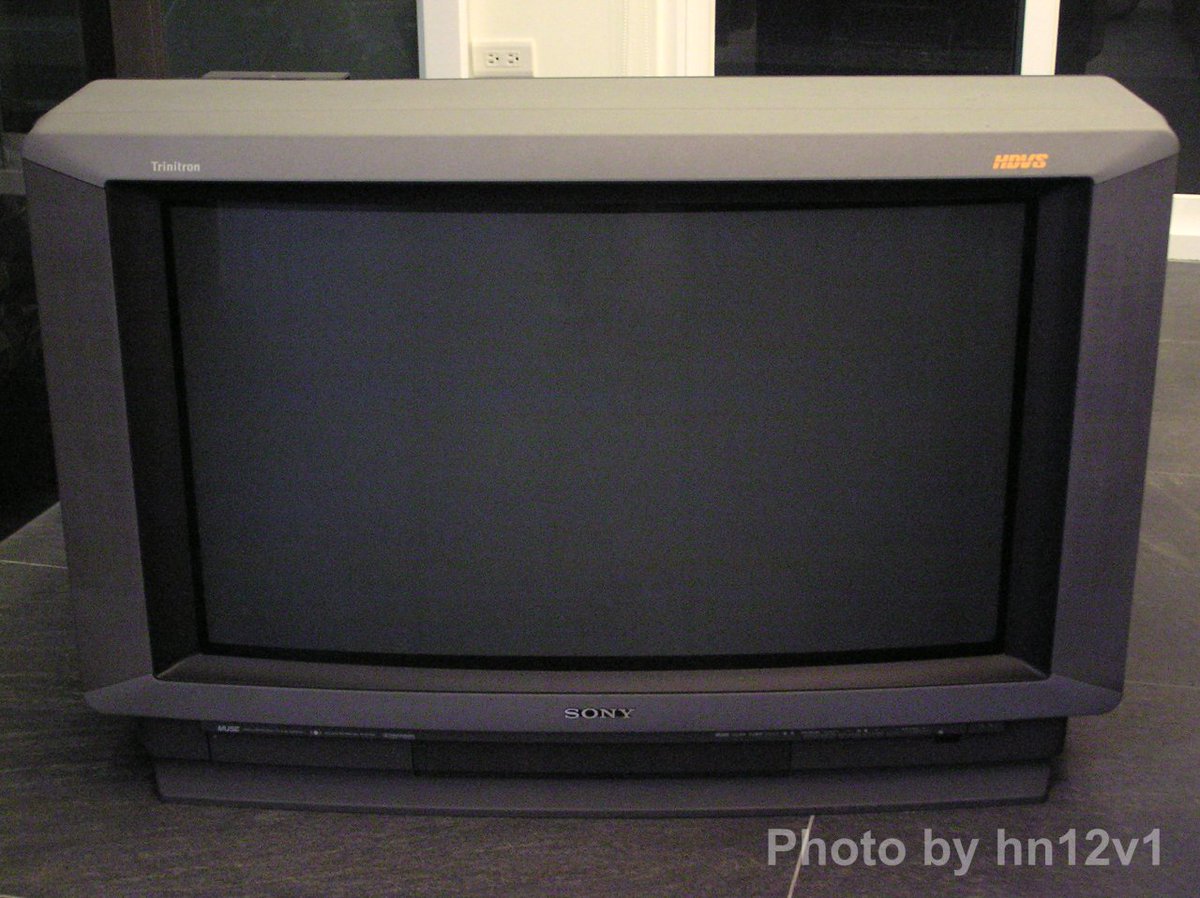AND the main article
ABANDONED FIRST DIGITAL TV AUDIO SYSTEMS
IN JAPAN
Transmission method normal image quality
Video is analog
Band-limited to 4.5 MHz NTSC [14]
The presence or absence of scrambling is multiplexed to voice data
Multiplexed 15 Hz energy spread signal
Frequency shift after FM modulation is 17 MHz
Basically, similar to terrestrial analog broadcasting, it also supports teletext and subtitles (only NHK satellite 2nd TV).
Voice is digital
Normal sound quality 4 channels or high sound quality 2 channels
A mode: 32 kHz 14/10 bit quasi-instantaneous decompression × 4 channels (TV audio broadcast 2 channels + independent audio broadcast 2 channels), data broadcast of at least 480 bits per frame
B mode: 48 kHz 16 bit linear PCM × 2 ch, data broadcast of at least 224 bits per frame [15]
B mode is (theoretically) higher sound quality than CD and BS digital broadcasting and is equivalent to DAT
Data broadcasting is performed using the free area of the audio frame
If data broadcasting is provided in packet format, it will be 288 bytes / packet [16]
Diagonal scanning is performed, and one packet is transmitted in nine frames (one super frame)
DQPSK 2048 kbps with subcarrier 5.7272 MHz
2048 bits per frame, 1 millisecond
Voice data is protected from transmission errors by (63, 56) BCH codes and 32-bit interleaving
FM modulation by mixing video and DQPSK modulated audio data by subcarrier
https://translate.google.bg/translat...pling_Encoding
Audio compression [17]
1350 bits per frame 1 millisecond
Voice compression method: Semi-instantaneous companding DPCM
mode
A mode: 32 kHz 15-8 bits (8 ranges) x 4 ch (3-1 stereo)
B mode: 48 kHz 16-11 bits (6 ranges) x 2 channels
Voice error control: (82, 74) shortened BCH 16-bit interleave
Multiplexing method: Ternary baseband multiplexing at 12.15 Mbaud during vertical retrace period
https://usermanual.wiki/Document/Pan...267423243/html
The audio is compressed by the DANCE ( DPCM Audio Near-instantaneous Compression and Expanding ) method developed for MUSE. Unlike standard broadcasts, sampling frequency 32 kHz 15 bits in up to 4 channels A mode supporting 3-1 stereo format, 48 kHz 16 bits digitized voice difference between sample points in up to 2 channels B mode with high sound quality DPCM compression is performed , and the difference signal is subjected to quasi-instantaneous companding (dropping) in a 1 ms interval, and compressed into 8 ranges 8 bits in A mode and 6 ranges 11 bits in B mode. Noise and DC errors at the time of transmission errors are reduced by performing incomplete integration using leak values in DPCM compression performed here, and by providing local decoders, accumulation of compression errors is prevented. This compressed digital voice is protected by (82, 74) shortened BCH and then interleaved by 16 bits, converted from a binary value of 0 and 1 to a ternary value of 0/1/2 12.15 Mbaud · time axis changed and MUSE Store in the vertical blanking interval, the part not displayed on the screen of the image. As for the value at the time of ternarization, the transmission path is different between AM and FM, and in the case of LD , the area for data broadcasting is removed to add stronger error correction [5] [18] . For data broadcasting, a 288-byte packet scheme with diagonal arrangement is adopted as in standard television broadcasting, and 18 frames constitute one super frame
Bitsream outputs on the MUSE decoders output DANCE audio track in its native form. There are no known AV processors that can decode this format. There are no outboard DANCE decoders either. Most if not all MUSE decoders convert DANCE into 2 pairs of PCM audio. A-MODE tracks are oversampled to 16bit(from 13bit) since PCM doesn't support 13bit. The sampling is untouched at 32Khz. The output is over 2 digital coax/optical. There are no known AV processors which can use two digital coax/optical simultaniously
BECAUSE
https://translate.google.bg/translat...%2F25%2F091732
When the television receives the BS, it outputs the detection signal and the bit stream signal to the WOWOW decoder .
The WOWOW decoder receives the two signals, generates unscrambled video and audio, and outputs video and audio signals from the yellow, white, and red terminals.
The television receives video and audio signals from the WOWOW decoder at a dedicated " scramble decoder input terminal".
And on the television side, "If you receive BS-5 ch, it is scrambled . So, instead of displaying the video from the BS tuner, let's display the video / audio signal from the scramble decoder input terminal." Process.
Now you can watch it





KW-3200HD 1992
IN EUROPE/WORLD
D-MAC (used by British Satellite Broadcasting) but not used on cable systems. This is a satellite only MAC format. Also used by NRK. This because D-MAC has 4 audio channels (D2-MAC just has 2 audio channels). Then it was possible to transmit 3 radio channels and 1 TV channel at one D-MAC channel.
NICAM was originally intended to provide broadcasters with six high-quality audio channels within a total bandwidth of 2048 kbit/s. This figure was chosen to match the E1 primary multiplex rate, and systems using this rate could make use of the planned PDH national and international telecommunications networks.